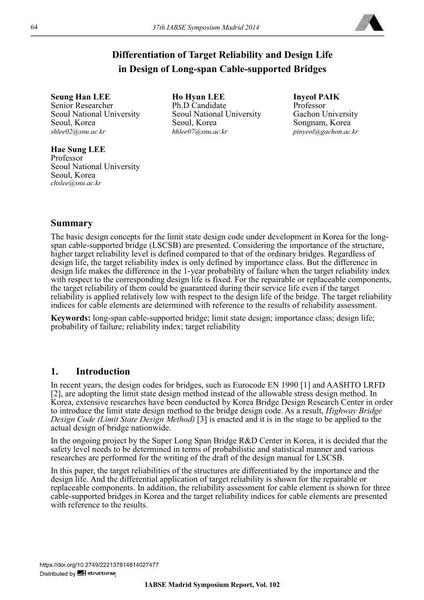Differentiation of Target Reliability and Design Life in Design of Long-span Cable-supported Bridges

|
|
|||||||||||
Bibliographic Details
| Author(s): |
Seung Han Lee
Ho Hyun Lee Inyeol Paik Hae Sung Lee |
||||
|---|---|---|---|---|---|
| Medium: | conference paper | ||||
| Language(s): | English | ||||
| Conference: | IABSE Symposium: Engineering for Progress, Nature and People, Madrid, Spain, 3-5 September 2014 | ||||
| Published in: | IABSE Symposium Madrid 2014 | ||||
|
|||||
| Page(s): | 64-70 | ||||
| Total no. of pages: | 7 | ||||
| Year: | 2014 | ||||
| DOI: | 10.2749/222137814814027477 | ||||
| Abstract: |
The basic design concepts for the limit state design code under development in Korea for the long- span cable-supported bridge (LSCSB) are presented. Considering the importance of the structure, higher target reliability level is defined compared to that of the ordinary bridges. Regardless of design life, the target reliability index is only defined by importance class. But the difference in design life makes the difference in the 1-year probability of failure when the target reliability index with respect to the corresponding design life is fixed. For the repairable or replaceable components, the target reliability of them could be guaranteed during their service life even if the target reliability is applied relatively low with respect to the design life of the bridge. The target reliability indices for cable elements are determined with reference to the results of reliability assessment. |
||||
| Keywords: |
reliability index design life probability of failure target reliability long-span cable-supported bridge limit state design importance class
|
||||
